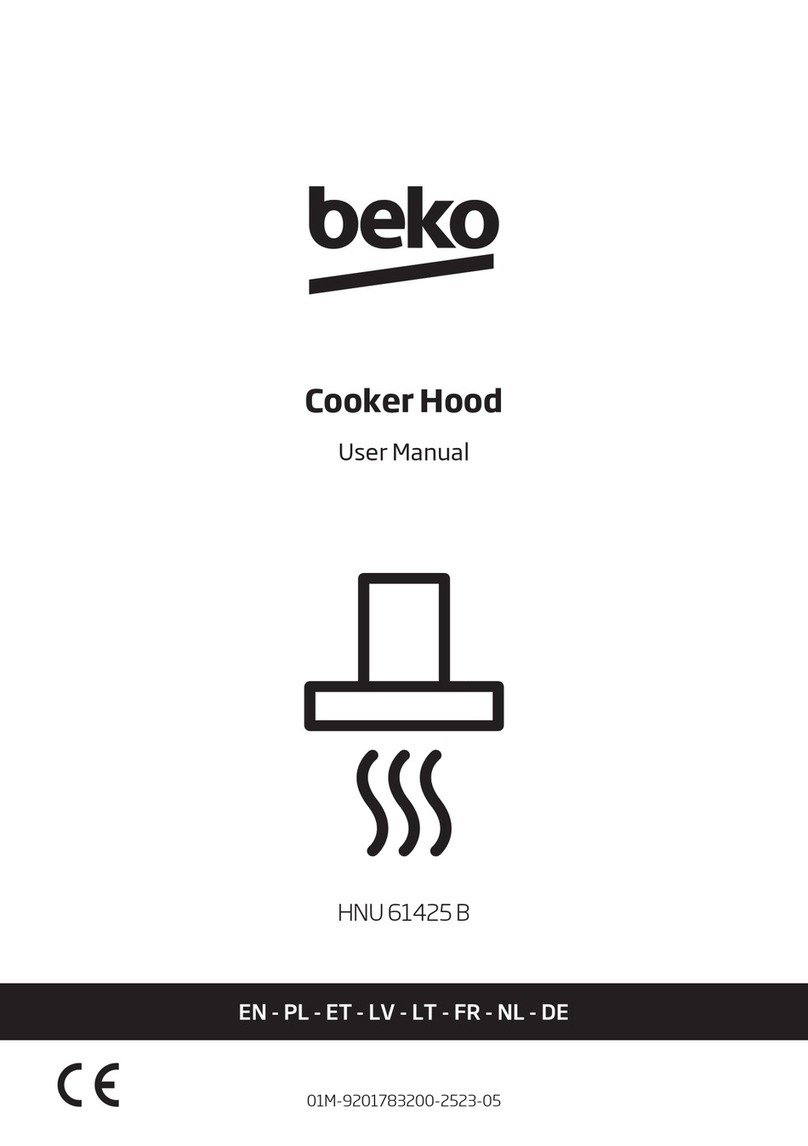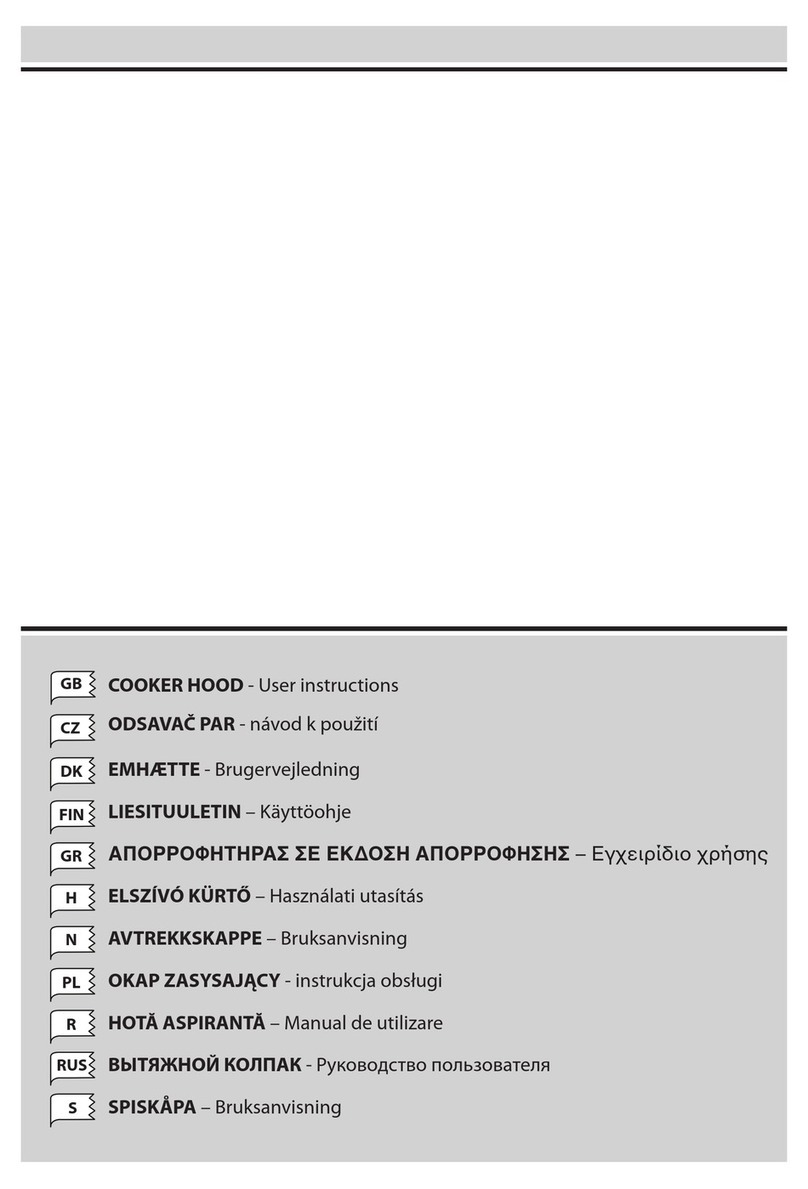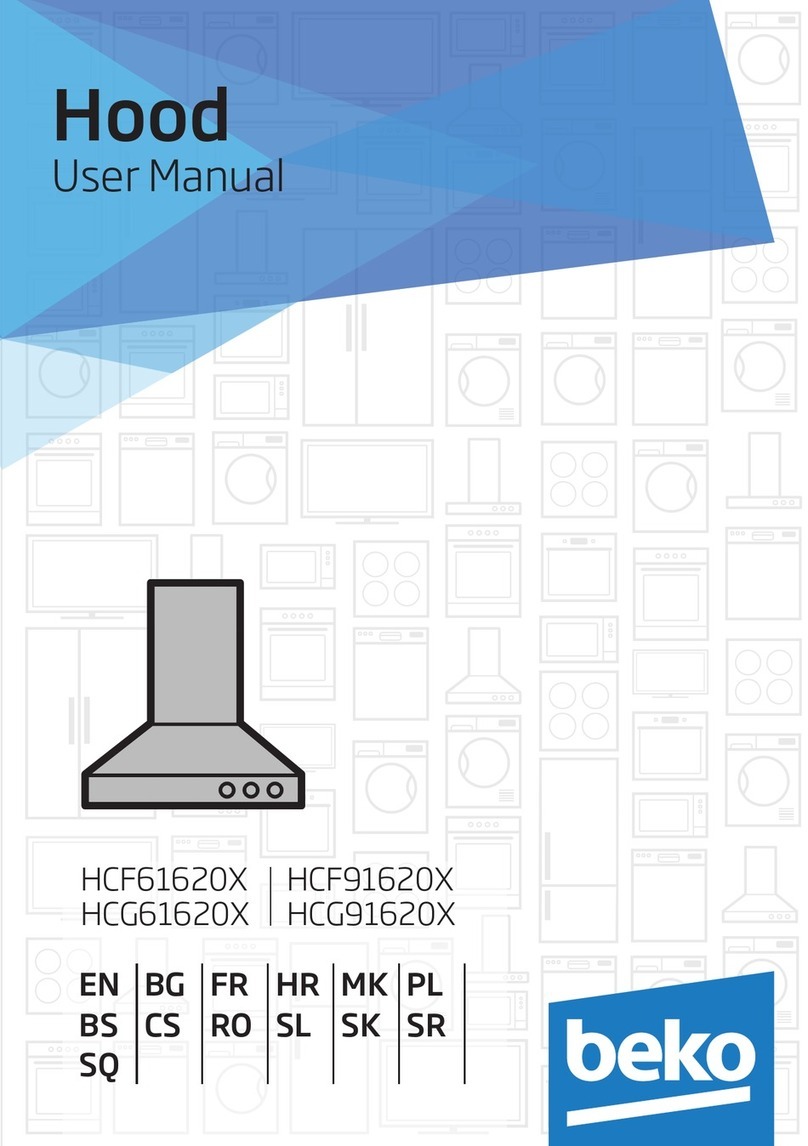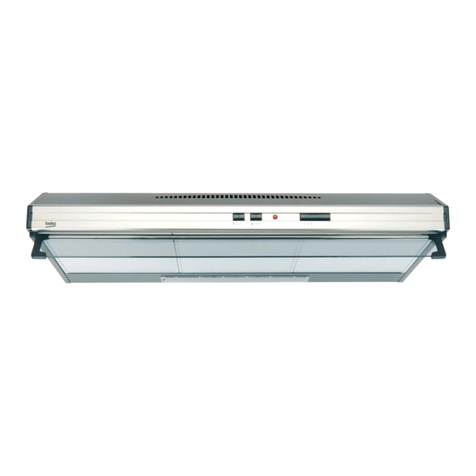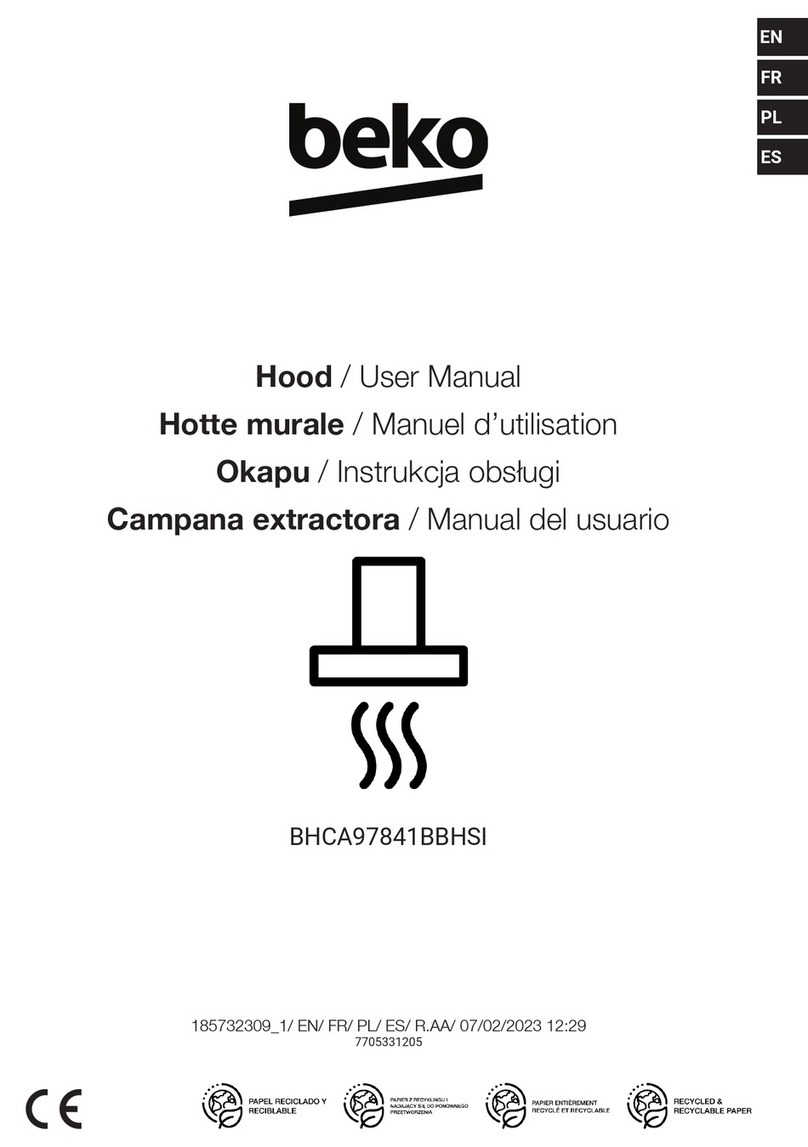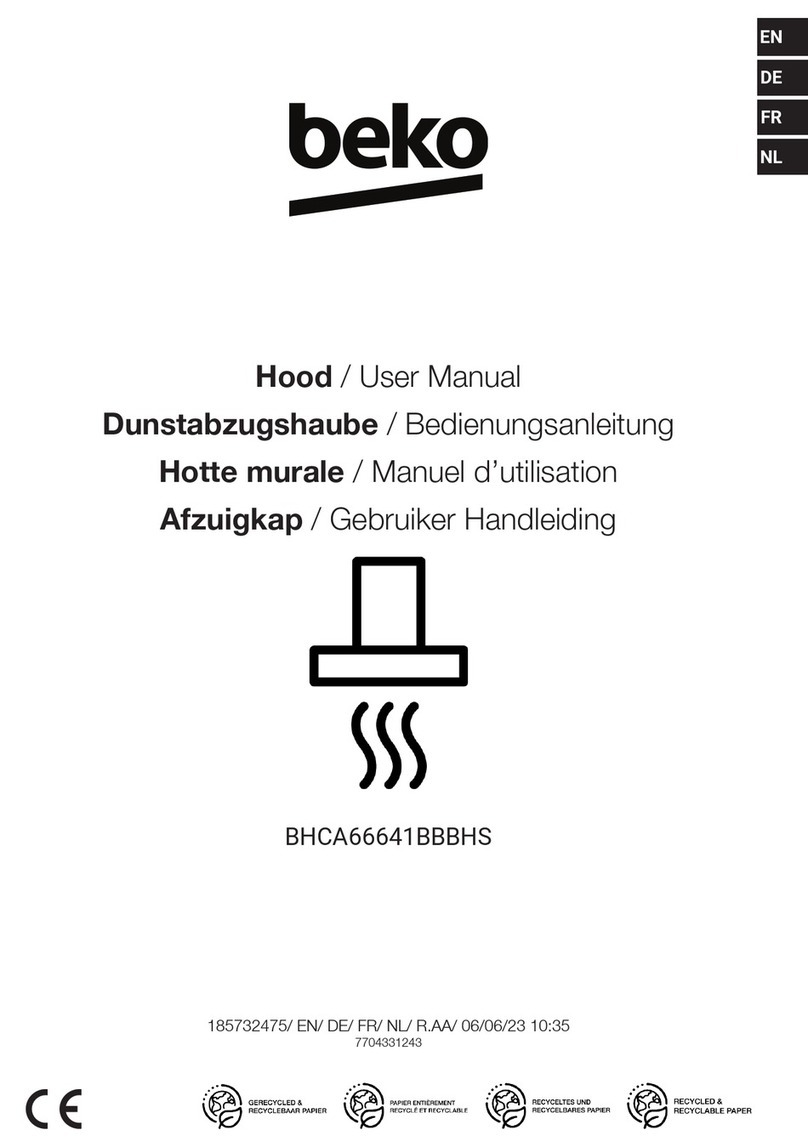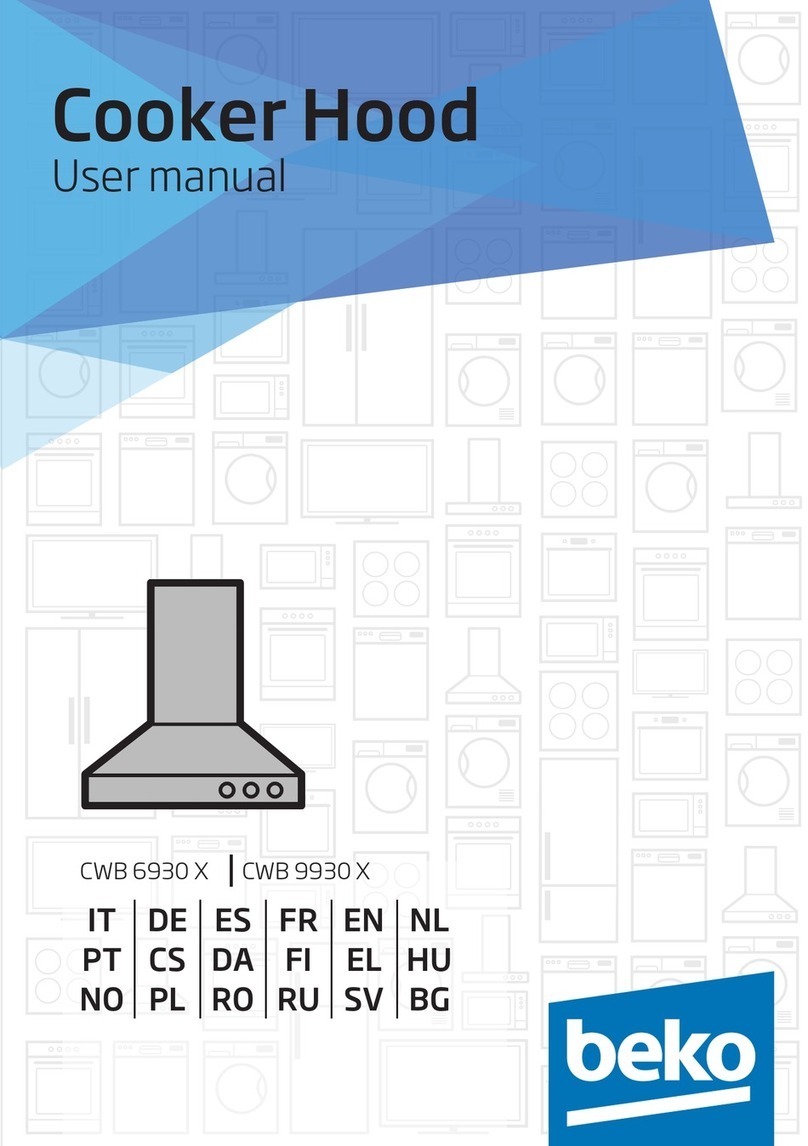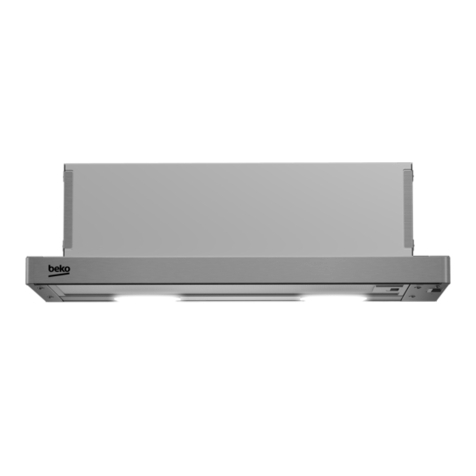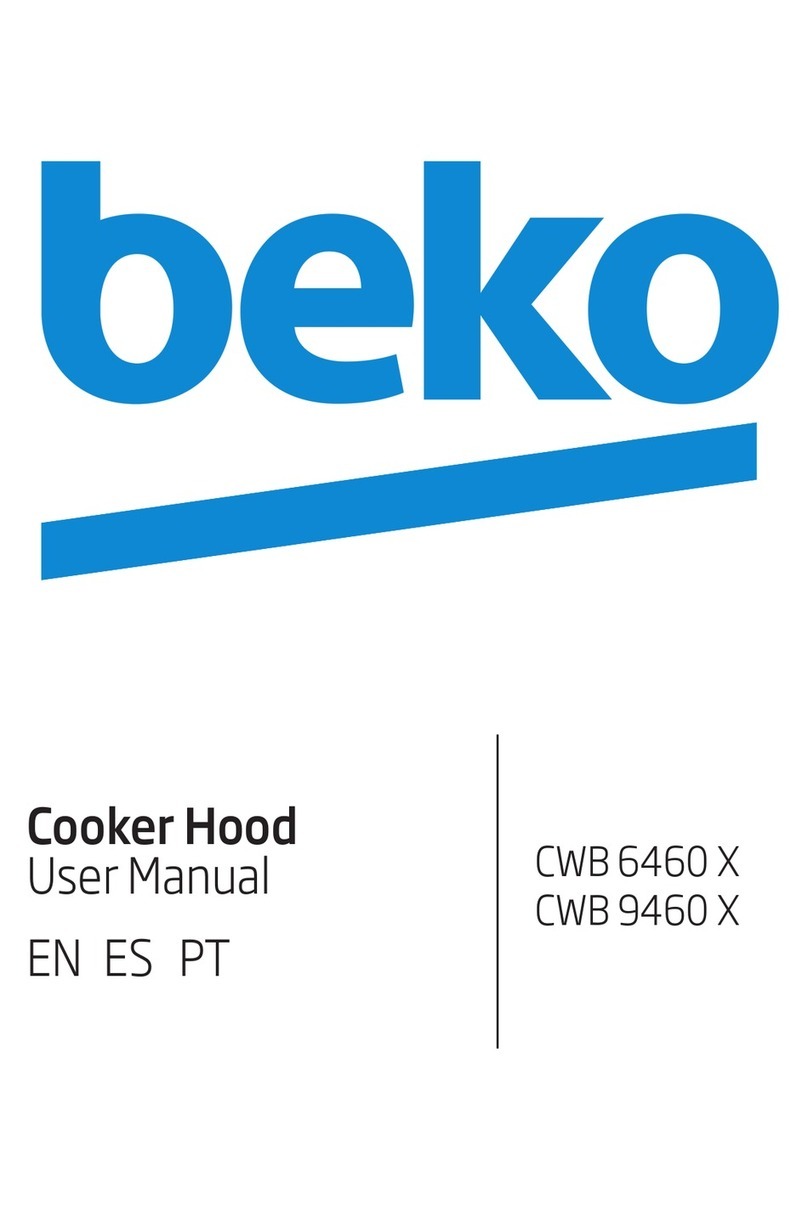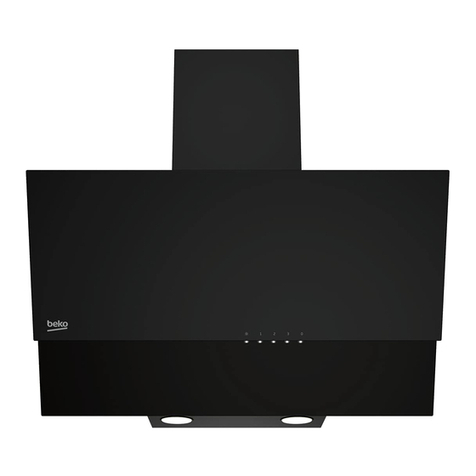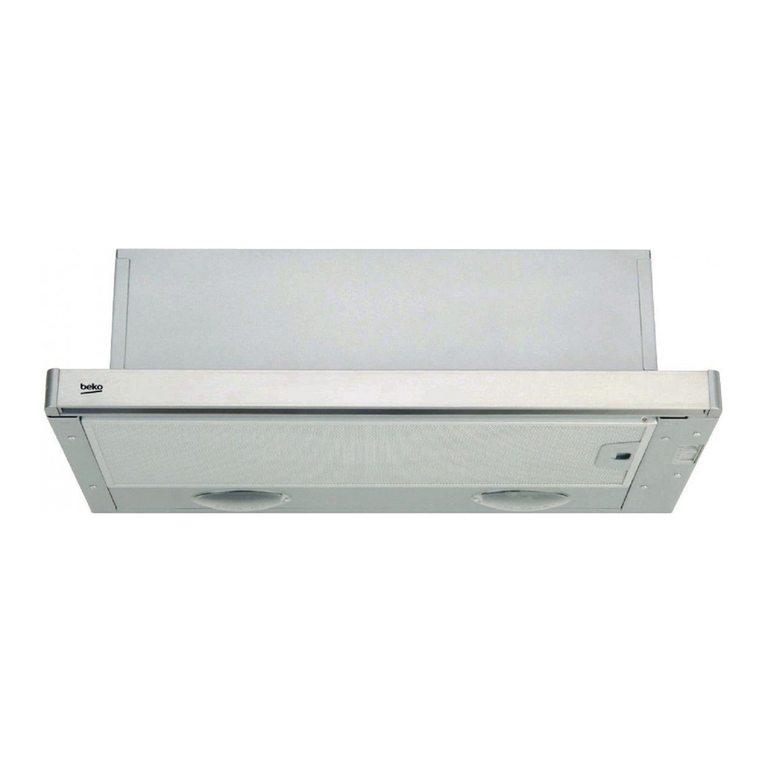19 / 43 EN
6 Control of hood operaton
The hood is equipped with a touch control located
on the top glass panel (Fig.12).
Fig. 12
Localization of the touch panel
Designation of touch fields:
Switching on/ off the hood
Switching on/ off the hood lighting
Reduction of turbine speed
Increasing the turbine speed
Digital display
6.1 Control of turbne
operaton
In standby mode, the control panel is not
illuminated and the fields , and are
disabled. To activate the control panel, touch the
field or use the remote control (if enclosed).
After activation, the control panel is highlighted
and the touch field symbols appear; touching the
field starts the turbine at the recently used
gear, touching the field starts the turbine at
the highest gear and touching the field starts
the turbine at the lowest gear.
The turbine speed can be increased by touching
the field , reducing – by touching the symbol
. Disabling the hood turbine is done by
touching the field or after touching the field
when the turbine is operating at first gear.
Along with the change of turbine speed, the digits
on the display change accordingly:
1- turbine operating in first gear, 2- turbine
operating in second gear, 3- turbine operating in
third gear, 4- turbine operating in intensive gear
(turbo).
In accordance with EU regulation 66/2014, the
hood is equipped with an automatic, five-minute
counter, which automatically changes the turbine
level from fourth gear into third after 5 minutes
(does not apply to the model with turbine number
“5”).
6.2 Lghtng control
To turn on the hood light, the symbol must be
pressed; another pressing of the symbol switches
the light off.
6.3 Addtonal nformaton on
the hood control
Thehoodcontrolisequippedwithahoodoperation
counter. The counter is set to 35 hours. After this
time expires, the display shows the symbol
F
indicating the
recommended cleaning of
the aluminum filter
. To delete the symbol
“F” on the hood display, the symbol must
be touched and held continuously for about 8
seconds.
The hood control is equipped with a touch panel
lock to deactivate the touch panel, for example
when cleaning the hood. To enable the lock, touch
and hold the symbol (for about 10 seconds)
until the symbol
.
(dot in the lower right corner)
appears on the display. To return to normal
operation, touch and hold the symbol again
(for about 10 seconds) until the dot on the display
goes out.




















